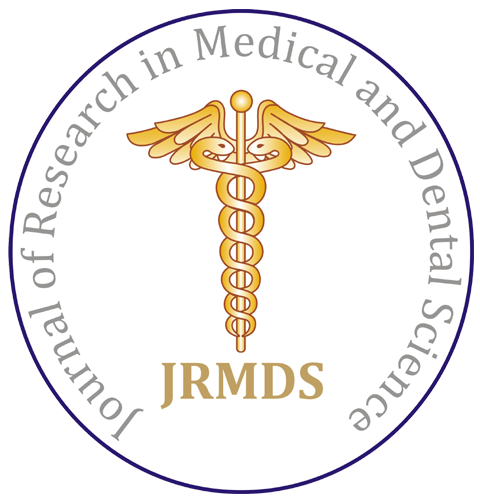Management of Liver Abscess
Author(s): Shubham Khanolkar and Meenakshi Yeola*
Abstract
Hepatic abscess are indeed a common source of morbidity and mortality in developed and underdeveloped countries due to parasite or infectious diseases (LMIC). The pathogenesis of abscess varies based on the origin, necessitating distinct diagnostic & therapeutic techniques. Pathogenesis and demography of abscesses, as well as the existing diagnostics technique as well as its shortcomings, as well as the treatment of hepatic abscess for reduced situations, are described in this article. Peritonitis caused by rupture of abdomen intestinal materials plus eventual spreading towards the hepatic through the hepatic portal vein or immediate dissemination in the context of bile disease are by far the commonest causes of acute bacterial hepatic abscess. It could also be caused by severe infections and vascular hematogenous implantation. Developments in screening and treatment techniques, as well as post - operative care, have lowered the short life expectancy dramatically. Initial detection and good and rapid therapy are linked to lower survival rates. According to the aetiology origin, hepatic abscess can be divided into 2 categories: pyogenic and amoebic. Abscesses can be amoebic, pyogenic (the most frequent), parasitic, or fungal. The majority of amoebic diseases are caused by Entamoebahistolytica. Pyogenic abscesses are polymicrobial in nature; however they are primarily populated by E. coli, Klebsiella, Streptococcus, Staphylococcus, and anaerobic bacteria. Despite the rarity of these abscesses, it is crucial to assess their seriousness because neglected individuals get a high mortality risk. The much more frequent pattern of abscess formation is bowel spilling into the abdominal, which then travels through the hepatic venous system to the liver parenchyma.
https://www.mobafire.com/profile/hairclinicturkey12-1120342?profilepage http://www.effecthub.com/user/3725395 http://hawkee.com/profile/4942036/ https://www.youmagine.com/hairclinicturkey12/designs https://www.myminifactory.com/users/Hairclinicturkey12 http://onlineboxing.net/jforum/user/edit/249808.page http://qooh.me/account/home/ https://linktr.ee/hairclinicturkey12 https://pubhtml5.com/homepage/mdwxx/ https://telegra.ph/Hairclinicturkey12-09-04 https://www.diggerslist.com/64f59d25b7c58/about https://allmyfaves.com/Hairclinicturkey12 https://www.metal-archives.com/users/Hairclinicturkey12 https://www.catchafire.org/profiles/2489383/ https://www.fimfiction.net/user/633242/Hairclinicturkey12 https://www.hebergementweb.org/members/hairclinicturkey12.547816/ https://www.sqlservercentral.com/forums/user/hairclinicturkey12 https://www.twitch.tv/hairclinicturkey12/about https://www.roleplaygateway.com/member/Hairclinicturkey12/ https://ko-fi.com/hairclinicturkey12#paypalModal https://www.provenexpert.com/hairclinicturkey12/ https://www.intensedebate.com/people/Hairclinicc https://www.indiegogo.com/individuals/35140189 https://visual.ly/users/hairclinicturkey/portfolio https://slides.com/hairclinicturkey12 https://letterboxd.com/Hairclinic/ https://micro.blog/Hairclinicturkey12 https://fliphtml5.com/dashboard/public-profile/bfpzi https://community.windy.com/user/hairclinicturkey https://speakerdeck.com/hairclinicturkey12 https://trello.com/u/hairclinicturkey/activity https://www.redbubble.com/people/Haircliniccc/shop?asc=u https://myanimelist.net/profile/Hairclinicturkey https://3dwarehouse.sketchup.com/user/53871fb5-b63c-4e79-9132-892722dbee98/Hairclinicturkey12-H?hl=en https://www.wattpad.com/user/Hairclinicturkey12 https://www.goodreads.com/user/show/169587001-hairclinicturkey12 https://en.gravatar.com/hairclinicturkey1f1e4837fe https://tr.pinterest.com/hairclinicturkey/ https://www.mapleprimes.com/users/Hairclinicturkey12 https://medium.com/@hairclinicturkey https://www.ted.com/profiles/44943103 https://www.infragistics.com/community/members/5d1663ba457498046538fdee66254751e73dec36?_ga=2.211091543.398805893.1693838470-2123631328.1693838470 https://www.metooo.io/u/64f5eea634cbec3769e3a31f https://app.roll20.net/users/12377263/hairclinicturkey12-h https://list.ly/hairclinicturkey/activity https://giphy.com/channel/Hairclinicturkey12 https://www.tumblr.com/hairclinicturkey12 https://dzone.com/users/4987646/hairclinicturkey12.html https://www.creativelive.com/student/hairclinicturkey12-hairclinicturkey12?via=accounts-freeform_2 https://gab.com/Hairclinicturkey12 https://sketchfab.com/Hairclinicturkey12 https://www.flickr.com/people/httpshairclinicistanbulco/ https://devpost.com/hairclinicturkey?ref_content=user-portfolio&ref_feature=portfolio&ref_medium=global-nav https://hub.docker.com/u/hairclinicturkey12 https://forums.autodesk.com/t5/user/viewprofilepage/user/self https://profiles.wordpress.org/hairclinicturkey12/ https://mastodon.online/@Hairclinicturkey12 https://wefunder.com/kayhannedim https://seedandspark.com/user/hairclinicturkey12-01h9jb2z6aa0r4f36hgzheattn https://calis.delfi.lv/blogs/posts/209061-httpshairclinicturkeyco/lietotajs/312805-hairclinicturkey12/ https://os.mbed.com/users/hairclinicturkey12/ https://notionpress.com/author/921497# https://my.desktopnexus.com/Hairclinicturkey12/ https://guides.co/a/hairclinicturkey12-hairclinicturkey12/ https://www.bahamaslocal.com/userprofile/1/239435/Hairclinicturkey12.html http://molbiol.ru/forums/index.php?showuser=1296495 https://www.credly.com/users/hairclinicturkey12-hairclinicturkey12/badges https://www.facer.io/user/hJneQdzIHS https://www.mobafire.com/profile/hairclinicistanbul12-1123299?profilepage https://www.youmagine.com/hairclinicistanbul12/designs https://www.myminifactory.com/users/Hairclinicistanbul12 http://qooh.me/Hairclinicist https://linktr.ee/hairclinicistanbul12 https://pubhtml5.com/homepage/eefjf/ https://telegra.ph/Hairclinicistanbul12-09-27 https://www.diggerslist.com/65143303732df/about https://allmyfaves.com/Hairclinicistanbul12 https://www.metal-archives.com/users/Hairclinicistanbul12 https://www.catchafire.org/profiles/2509718/ https://www.fimfiction.net/user/641046/Hairclinicistanbul12 https://www.hebergementweb.org/members/hairclinicistanbul12.559515/ https://www.sqlservercentral.com/forums/user/hairclinicistanbul12 https://www.twitch.tv/hairclinicistanbul12/about https://www.roleplaygateway.com/member/Hairclinicistanbul12/ https://www.provenexpert.com/hairclinicistanbul12/?mode=preview https://www.intensedebate.com/people/Hairclinicist https://www.indiegogo.com/individuals/35376235 https://visual.ly/users/hairclinicistanbul/portfolio https://slides.com/hairclinicistanbul12 https://letterboxd.com/hairclinicistan/ https://fliphtml5.com/dashboard/public-profile/wmtuf https://community.windy.com/user/hairclinic https://speakerdeck.com/hairclinicistanbul12 https://trello.com/u/hairclinicistanbul https://myanimelist.net/profile/Hairclinicistan https://3dwarehouse.sketchup.com/user/081ffb68-8bf6-449f-975a-e0908030df87/Hairclinicistanbul12-H https://www.wattpad.com/user/Hairclinicistanbul12 https://www.goodreads.com/user/show/170299480-hairclinicistanbul12 https://gravatar.com/hairclinicistanbul https://tr.pinterest.com/hairclinicistanbul0480/ https://www.mapleprimes.com/users/Hairclinicistanbul12 https://medium.com/@hairclinicistanbul https://www.ted.com/profiles/45170118 https://www.infragistics.com/community/members/1627f6258019da0fe4f990bd5ed1c877d6e8f294?_ga=2.248269444.2069745155.1695984006-465241076.1695984006 https://www.metooo.io/u/6516af2edbe9bd71f3cf02b6 https://app.roll20.net/users/12476405/hairclinicistanbul12-h https://list.ly/hairclinicistanbul/activity https://giphy.com/channel/Hairclinicistanbul12 https://www.tumblr.com/hairclinicistanbul12 https://www.creativelive.com/student/hairclinicistanbul12?via=accounts-freeform_2 https://gab.com/Hairclinicistanbul12 https://sketchfab.com/Hairclinicistanbul12 https://www.flickr.com/people/199229354@N07/ https://profiles.wordpress.org/hairclinicistanbul12/ https://seedandspark.com/user/hairclinicistanbul12-01hbgfmq3hb9sg7nzdyggskc9k https://os.mbed.com/users/hairclinicistanbul12/ https://calis.delfi.lv/blogs/posts/214421-httpshairclinicistanbulco/lietotajs/316665-hairclinicistanbul12/ https://notionpress.com/author/930794 https://my.desktopnexus.com/Hairclinicistanbul12/ https://guides.co/a/hairclinicistanbul12-hairclinicistanbul12/ https://www.bahamaslocal.com/userprofile/1/247523/Hairclinicistanbul12.html http://molbiol.ru/forums/index.php?showuser=1300967 https://www.credly.com/users/hairclinicistanbul12-hairclinicistanbul12/badges https://ko-fi.com/hairclinicistanbul12#paypalModal https://devpost.com/hairclinicistanbul?ref_content=user-portfolio&ref_feature=portfolio&ref_medium=global-nav https://www.redbubble.com/people/Hairclinicc/shop?asc=u https://dzone.com/users/5000227/hairclinicistanbul12.html https://hub.docker.com/u/hairclinicistanbul12 http://onlineboxing.net/jforum/user/editDone/253267.page https://micro.blog/Hairclinicistanbul12 http://www.effecthub.com/user/3728420 http://hawkee.com/profile/5094365/ https://wefunder.com/hairclinicistanbul12 https://www.facer.io/user/qrNVyeaUK4 https://mastodon.online/@Hairclinicistanbul12 https://www.mobafire.com/profile/fethiyeteknekirala12-1121904?profilepage http://www.effecthub.com/user/3727380 http://hawkee.com/profile/5006232/ https://www.youmagine.com/fethiyeteknekirala12/designs https://www.myminifactory.com/users/Fethiyeteknekirala12 http://qooh.me/Fethiye https://linktr.ee/fethiyeteknekirala12 https://pubhtml5.com/homepage/ifatm/ https://telegra.ph/Fethiyeteknekirala12-09-15 https://www.diggerslist.com/650418ba62e19/about https://allmyfaves.com/Fethiyeteknekirala12 https://www.metal-archives.com/users/Fethiyeteknekirala12 https://www.catchafire.org/profiles/2498881/ https://www.fimfiction.net/user/636860/Fethiyeteknekirala12 https://www.hebergementweb.org/members/fethiyeteknekirala12.554083/ https://www.sqlservercentral.com/forums/user/fethiyeteknekirala12 https://www.twitch.tv/fethiyeteknekirala12/about https://www.roleplaygateway.com/member/Fethiyeteknekirala12/ https://www.provenexpert.com/fethiyeteknekirala12/ https://www.intensedebate.com/people/Fethiyetekne https://www.indiegogo.com/individuals/35240061 https://visual.ly/users/fethiyeteknekirala/portfolio https://slides.com/fethiyeteknekirala12 https://letterboxd.com/Fethiyeteknekir/ https://micro.blog/Fethiyeteknekirala12 https://fliphtml5.com/dashboard/public-profile/dbjxj https://community.windy.com/user/fethiyetekne https://speakerdeck.com/fethiyeteknekirala12 https://trello.com/u/fethiyeteknekirala https://myanimelist.net/profile/Fethiyeteknekira https://3dwarehouse.sketchup.com/user/45b6eac8-6685-42d9-be3d-9a1f6ad5c1a4/Fethiyeteknekirala12-F https://www.wattpad.com/user/Fethiyeteknekirala12 https://www.goodreads.com/user/show/169915172-fethiyeteknekirala12 https://en.gravatar.com/fethiyeteknekirala https://tr.pinterest.com/fethiyeteknekirala/ https://www.mapleprimes.com/users/Fethiyeteknekirala12 https://medium.com/@fethiyeteknekirala https://www.ted.com/profiles/45068042 https://www.infragistics.com/community/members/2a2be42bea6dacdcb7361cf0393029e321d5b2ba?_ga=2.166429755.422165823.1695026510-789037801.1695026509 https://www.metooo.io/u/65080e076104c55a8b122dbd https://app.roll20.net/users/12433375/fethiyeteknekirala12-f https://list.ly/fethiyeteknekirala/activity https://giphy.com/channel/Fethiyeteknekirala12 https://www.tumblr.com/fethiyeteknekirala12 https://www.creativelive.com/student/fethiyeteknekirala12-fethiyeteknekirala12?via=accounts-freeform_2 https://gab.com/Fethiyeteknekirala12 https://sketchfab.com/Fethiyeteknekirala12 https://www.flickr.com/people/199176956@N04/ https://profiles.wordpress.org/fethiyeteknekirala12/ https://wefunder.com/fethiyeteknekirala12 https://seedandspark.com/user/fethiyeteknekirala12-01hakvv2403ts6ce2gkavb7nky https://calis.delfi.lv/blogs/posts/211749-httpsfethiyeteknekiralacomtr/lietotajs/314813-fethiyeteknekirala12/ https://os.mbed.com/users/fethiyeteknekirala12/ https://notionpress.com/author/926471 https://my.desktopnexus.com/Fethiyeteknekirala12/ https://guides.co/a/fethiyeteknekirala12-fethiyeteknekirala12/ https://www.bahamaslocal.com/userprofile/1/243517/Fethiyeteknekirala12.html http://molbiol.ru/forums/index.php?showuser=1298704 https://www.credly.com/users/fethiyeteknekirala12-fethiyeteknekirala12/badges https://www.facer.io/user/VN1tGPoBgC https://ko-fi.com/fethiyeteknekirala12#paypalModal https://mastodon.online/@Fethiyeteknekirala12, https://devpost.com/fethiyeteknekirala?ref_content=user-portfolio&ref_feature=portfolio&ref_medium=global-nav https://www.redbubble.com/people/Fethiyetekne/shop?asc=u https://dzone.com/users/4993259/fethiyeteknekirala12.html https://hub.docker.com/u/fethiyeteknekirala12 http://onlineboxing.net/jforum/user/editDone/251734.page
